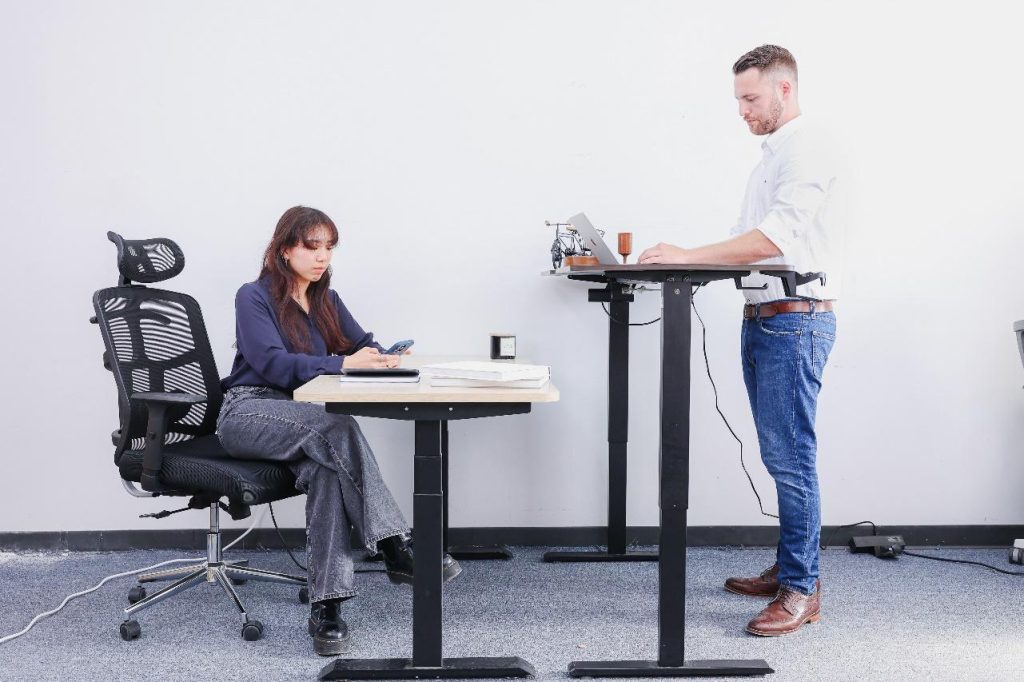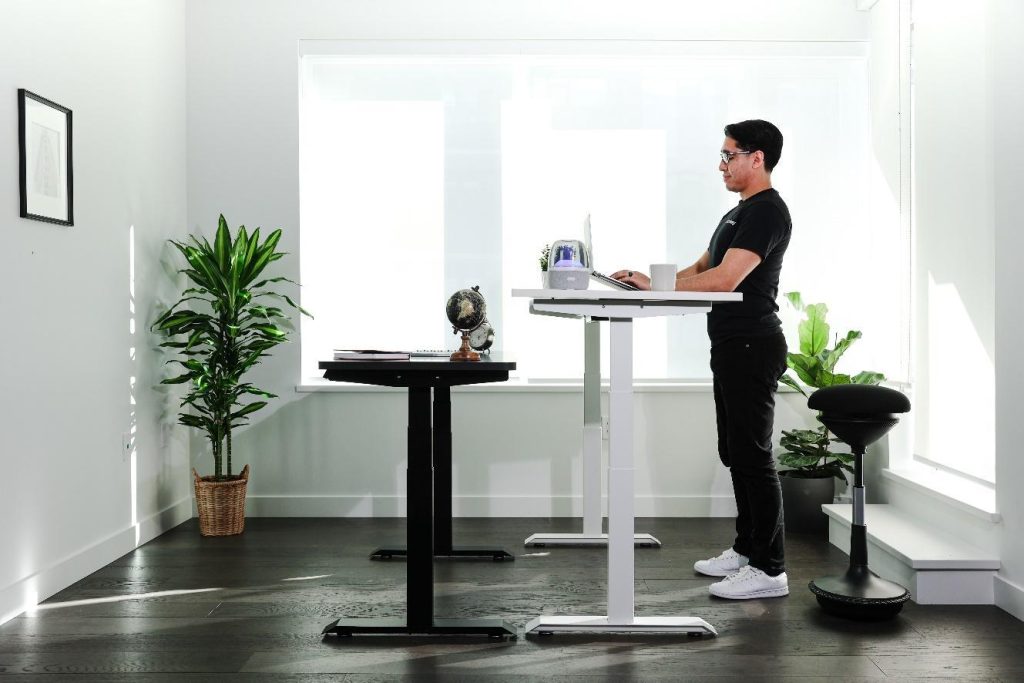In today’s fast-paced work environment, the sedentary nature of desk jobs can take a toll on our health and well-being. Enter the standing desk—a versatile tool that encourages movement and promotes a healthier work routine. But owning a standing desk is just the beginning. In this post, we’ll guide you through practical strategies to help you stand more at work, maximizing the benefits of your standing desk and boosting your overall well-being.

- Master the Sit-Stand Balance
Effective utilization of a standing desk involves finding the right balance between sitting and standing. Aim to spend around 15-30 minutes standing for every hour of work. Gradually increase standing intervals as your body adapts to this new routine.
- Set Regular Reminders
Incorporate technology to your advantage. Set hourly reminders or use smartphone apps to prompt you to switch between sitting and standing. These prompts serve as gentle nudges to keep you mindful of your posture and movement.
- Create a Standing Schedule
Designate specific blocks of time throughout your workday for standing. Whether it’s during brainstorming sessions, phone calls, or reading emails, consciously choose to stand during these activities. Over time, this schedule will become a habit.
- Break It Up
Short, frequent breaks can do wonders for your energy levels and focus. Incorporate micro-breaks—brief intervals of standing, stretching, or even a quick walk—to prevent fatigue and keep your muscles engaged.

- Adopt Active Habits
Incorporate active habits seamlessly into your work routine. Opt for a standing desk converter that allows you to easily switch between sitting and standing. Whenever you’re on a call, stand up and walk around to keep your body in motion.
- Take Walking Meetings
Transform conventional meetings into walking meetings. Grab your notebook or digital device, invite a colleague, and discuss ideas while strolling around the office or an outdoor area. This practice not only increases your daily step count but also promotes creative thinking.
- Elevate Your Workspace
Ensure that your standing desk is properly adjusted to your body’s proportions. Your monitor should be at eye level, and your keyboard and mouse should be at a comfortable height to maintain an ergonomic posture.
- Stand During Tasks
Utilize standing intervals for tasks that don’t require you to be seated. Whether you’re reading reports, responding to emails, or reviewing documents, make the most of your standing desk’s flexibility.
- Prioritize Comfort
Invest in an anti-fatigue mat to reduce pressure on your feet and legs while standing. Wear comfortable shoes that support your feet during prolonged standing periods.
- Listen to Your Body
Pay attention to how your body responds to standing. If you feel any discomfort or fatigue, don’t hesitate to sit down. The goal is to enhance your work experience, not push yourself beyond your limits.
Conclusion: Stand Tall, Work Well
Incorporating more standing into your workday is a gradual process that yields long-lasting benefits for your health and productivity. By leveraging the versatility of your standing desk and integrating these strategies, you’re taking proactive steps toward a more active and balanced work routine. Embrace the power of standing, and watch as your energy, focus, and overall well-being soar to new heights.
